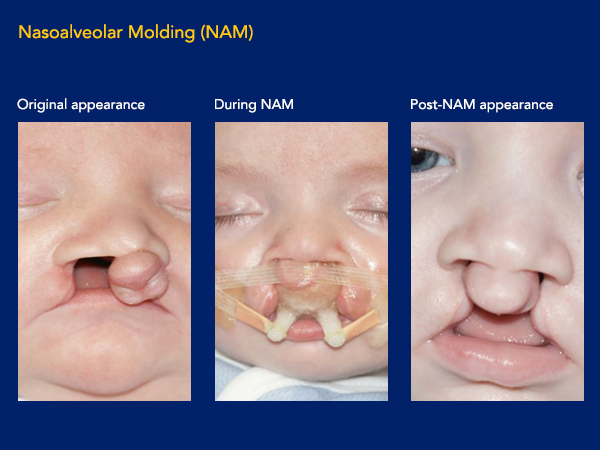Where To Find Cleft Lip Surgery Treatment
What is cleft lip?
A cleft lip is a birth defect that results when tissues of the lip and bone of the upper jaw fail to fuse during early development of the fetus. This failure occurs during the 4th and 6th week of gestation. The condition varies from a small notch in the red part of the lip (Fig. 2) to a wide gap in the lip and gum line extending into the nostril of the nose (Fig. 3). A cleft lip may occur on the left side, the right side, or both sides (Fig. 4). Cleft lip surgery is required to repair a cleft lip.
How common are cleft lips?
 Fig. 1 – Normal lip
Fig. 1 – Normal lip
Roughly 1 out of every 1000 children are born with a cleft lip. About 70% of these children will also have a cleft palate. The other one third will have only a cleft lip. Cleft lip is more common in certain ethnic groups. It is more common in Asians, Latinos, and Native Americans and much less common in Africans.
What causes a cleft lip?
 Fig. 2 – Small incomplete cleft lip
Fig. 2 – Small incomplete cleft lip
It may surprise you to know that despite years of research we still do not have a great understanding of why cleft lips occur. Most doctors and scientists agree that clefts are a combination of genetic as well as environmental factors including drugs, infections, maternal illness, and possibly vitamin deficiencies. There is recent medical evidence to suggest that mothers with diets rich in folic acid (fruits, vegetables, and other high folate containing foods) who take folic acid supplements during pregnancy have a lower risk of having a baby with a cleft lip.
Other birth defects can occur in children with cleft lips. Some of these defects are obvious and some are more difficult to detect. However, most children born with a cleft lip and/or palate are otherwise normal, healthy children.
How is a cleft lip repaired?
 Fig. 4 – Bilateral cleft lip
Fig. 4 – Bilateral cleft lip
The repair of a cleft lip requires surgery and general anesthesia. Many different techniques have been developed over the years to repair cleft lips. Different techniques are appropriate for different kinds of cleft lips. Your doctor will select the type of corrective surgery for cleft lip that is most appropriate for your child’s type of cleft lip.
When is the right time for cleft lip surgery?
Some parents wonder if their baby’s cleft lip can be repaired right away. Some even want it done before they take their baby home from the hospital. However, it is best to wait until your child is at least 8 to 12 weeks old before having a cleft lip surgery procedure to repair the lip.
Waiting a short period of time after birth has many advantages. This short period of time allows your child to establish a good pattern of feeding and weight gain which is important during cleft lip repair recovery. It also allows you and your family to adjust your lifestyles to the joys and stresses of welcoming a new child into your family. It is important to establish the parent-child bond during the first weeks of life before having to cope with the cleft lip surgery recovery. Also, there is no advantage to repairing the lip any sooner. The results will be the same either way.
Can I breast feed my child with a cleft lip?
 Fig. 3 – Complete unilateral cleft lip
Fig. 3 – Complete unilateral cleft lip
That depends! If your child does not have a cleft palate, then he/she can and most likely will successfully nurse at the breast. A cleft lip does not prevent a child from breast feeding successfully (even a wide cleft lip involving the gum line, Fig. 3).
However, if your child also has a cleft palate then he/she does not have the ability to generate an effective “suck” and will not be able to breast feed successfully. Some well-intentioned friends and/or medical professionals may encourage you to try and breast feed your child anyway. Unfortunately encouraging a mother to breast feed a child with a cleft palate only sets mother and baby up for failure. But rest assured, there are ways to successfully feed a child with cleft lip and palate. More specific information is available on our cleft lip and palate feeding page.






